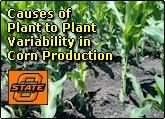 Yield Goals and Prediction of Yield Goals
Yield Goals and Prediction of Yield Goals
Dahnke, W.C., L.J. Swenson, R.J. Goos, and A.G. Leholm. 1988. Choosing a crop yield goal. North Dakota State Ext. Serv. SF-822. Fargo, North Dakota.
Fernandez, F. G., E. D. Nafziger, S. A. Ebelhar, and R. G. Hoeft. 2009. Managing nitrogen. Illinois agronomy handbook. Univ. Illinois Coop. Ext. Serv. Urbana-Champaign. 113-132.
Johnson, G.V. 1991. General model for predicting crop response to fertilizer. Agron. J. 83:367–373.
Raun, W.R., B. Figueiredo, J. Dhillon, J.T. Bushong, R.K. Taylor, H. Zhang, A. Fornah. 2017. Can yield goals be predicted? Agron. J. 109(5) DOI: 10.2134/agronj2017.05.0279
Rehm, George, and Michael Schmitt. 1989. Setting realistic crop yield goals. Minnesota Ext. Serv. AG-FS-3873, Univ. of Minnesota, 55108.
Sawyer, J., E. Nafziger, G. Randall, L. Bundy, G. Rehm, and B. Joern. 2006. Concepts and rationale for regional nitrogen rate guidelines for corn. PM 2015. Iowa State Univ. Extension, Ames.
Scharf, P. C., N. R. Kitchen, K. A. Sudduth, J. G. Davis, V. C. Hubbard, et al. 2005. Field-scale variability in optimal nitrogen fertilizer rate for corn. Agron. J. 97(2), 452-461.
Shanahan, J. 2011. Determining optimum nitrogen rates for maize. Crops Insights, 21(2), 1-5 Pioneer Hi-Bred, Johnston, IA.
Shanahan, J.F., N.R. Kitchen, W.R. Raun, and J.S. Schepers. 2008. Responsive in-season nitrogen management for cereals. Computers and Electronics in Agric. 61:51-62.
Van Es, H. M., B. D. Kay, J. J. Melkonian, and J. M. Sogbedji. 2006. Nitrogen management for maize in humid regions: Case for a dynamic modeling approach. In Managing Crop Nitrogen for Weather: Proceedings of the Symposium “Integrating Weather Variability into Nitrogen Recommendations,” Indianapolis, IN.15:6-13.

